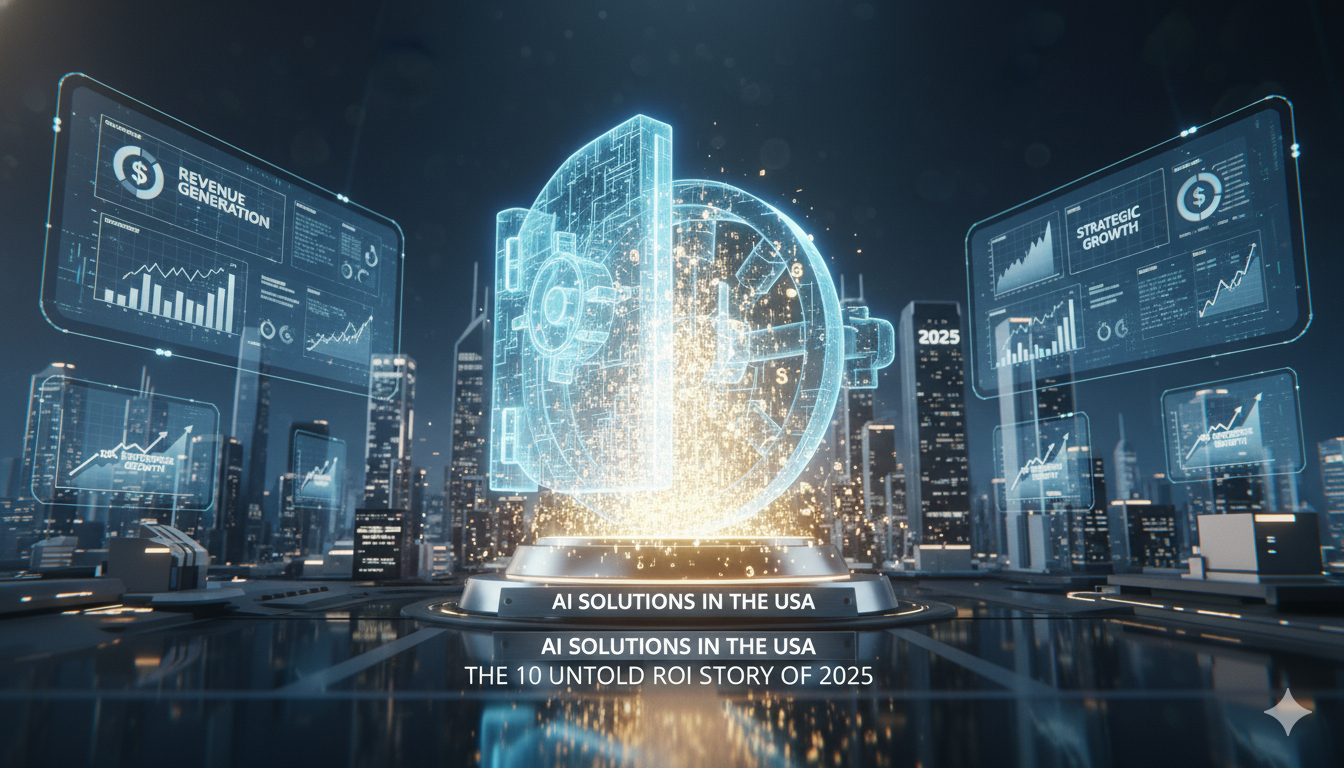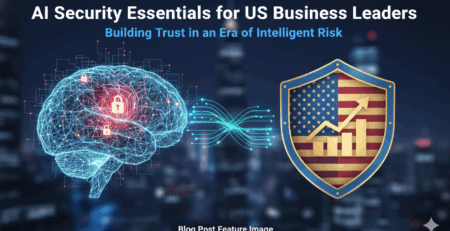AI Solutions in the USA The Untold ROI Story of 2025
How AI Services Are Redefining the Landscape of American Business
The sun rises over the sprawling offices of Portland Distribution, where early-morning conversations swirl around backlogs, surging seasonal demand, and last night’s error logs. The operations manager, Michael, squints at a monitor, not at code or dashboards, but a simple alert: “delay risk action required.” Six months ago, Michael reviewed these alerts with skepticism. “ROI felt like something for the big league,” he remarks. “Now, every process tweak, every predictive report feels less like guesswork, more like management.”
In businesses of every stripe, AI isn’t just software; it’s changing how teams think, prioritize, and measure success. The ROI? It’s not just in cost or output, but in how people approach problems, discover efficiencies, and occasionally fight the urge to resist.
Why Businesses Are Cautiously Adopting AI Services
Analysts estimate AI-driven productivity could add $2 trillion to the U.S. economy within a few years, but in the real world, progress is anything but linear. When Portland Distribution’s leadership debated automating route planning last year, the board split. “We thought we’d lose our grip on day-to-day controls,” recalls Angela, a senior logistics planner. They launched a pilot, tracked every metric, and braced for fallout.
Early on, some processes slowed. Employees needed training. “ROI looked distant,” Angela admits. Yet month by month, error rates dropped. Trucks are filled more efficiently. Returns, once a nagging worry, fell by 7%. “It wasn’t magic,” she says. “Just slow, stubborn improvement.”
This isn’t about top-down disruption. The value of AI is woven through daily routines, sometimes realigned by data, sometimes by gut feeling.
Measuring ROI Human Stories Inside the Metrics
To understand the true return on AI investments, I spoke to managers, line staff, and analysts across manufacturing, retail, healthcare, and finance. At Ever Lane Retail, Stella recalls the confusion of the transition. “Our staff spent weeks just learning the new cash flow tools. We missed a lot.” But within months, mismatched stock figures faded, receipts snapped into digital ledgers, and return rates dipped by 4.5%.
At a Midwestern healthcare firm, James, the finance lead, watched as a custom billing platform with AI-powered error detection reduced claims rejections by nearly 19%. The software flagged anomalies long before staff found them, but James notes, “The real value came when my team started to trust the outputs, test what was off, and learn from the exceptions.”
ROI is more than savings; it’s flexibility, better decisions, and occasionally, a heated argument over process changes.
How AI ROI Shows Up in Daily Operations
Manufacturing:
At Barton Steel, predictive maintenance algorithms now spot faulty machinery days before breakdown. “We don’t wait for disaster anymore. That alone paid for the system within two quarters,” notes plant manager Lucas.
Finance:
The billing team at Central Credit uses document analysis to cut processing times by half, freeing associates to focus on customer service. “I stopped chasing paperwork and started solving real problems,” says Samantha.
Healthcare:
A hospital network’s predictive ER triage system flagged high-risk cases early, saving both lives and labor hours. “We used to worry about false alarms. Now, we worry less about missing the real emergencies.”
Retail:
Everlane’s demand forecasting saw certain product lines soar. “It’s less about the tech,” Stella says. “More about how quickly we respond to what the numbers tell us.”
Building ROI from the Ground Up
Real business transformation isn’t glamorous. There are setbacks, doubts, and ugly data errors. Barton Steel’s machine learning rollout stalled when sensors failed during peak season. Lucas remembers, “We questioned the whole project until we realized we’d missed a calibration step. The fix was fast, but the lesson stuck.”
Every organization faces these moments. ROI is earned not just by the algorithm, but by the way teams learn, adjust, and recover.
Industry Snapshots
- Barton Steel: One-month downtime avoided, thousands saved by catching hydraulics issues early.
- Central Credit: Document automation flagged a revenue leak nobody saw, recovering $120,000 in a quarter.
- Portland Distribution: Route optimization shrank fuel costs even as delivery volumes grew.
Customization is the Key to Real ROI
The best results rarely come from one-size-fits-all solutions. At Everlane Retail, an off-the-shelf recommendation engine misread customer trends until it was tailored for regional preferences.
Effective AI ROI is built from:
- Custom modeling for business needs
- Incremental deployment and validation
- Consistent feedback loops, human plus machine
- Quick wins to build buy-in
At Central Credit, ROI wasn’t about replacing staff but about enabling faster, smarter decision-making. The more tailored the AI, the smoother the adoption and the greater the return.
Why Companies Invest Beyond the Numbers
Jake, a technology advisor at Barton Steel, puts it bluntly: “Boards want ROI because it’s proof. Staff want ROI because it’s relief.” Whether automating scheduling, crunching compliance data, or predicting consumer demand, AI success hinges on trust and agility.
Stories repeat across industries. In healthcare, the shift from manual logging to predictive analytics didn’t remove staff; it let them focus on patients. In manufacturing, machine learning gave plant managers time back. In retail, recommendation engines turned shoppers into loyalists.
ROI, at its core, is about empowering people to do their best work.
The Everyday Scrapes Learning Along the Way
Not every AI project is smooth. At Ever lane Retail, misconfigured alerts once froze inventory movement for a whole morning. Staff scrambled then, in the process, found how to tweak thresholds for true positives.
Central Credit’s algorithm flagged duplicate invoices that weren’t errors at all. “We got more cautious,” Samantha recalls. “We learned to double-check, review logic, and escalate when in doubt.” Each mistake strengthened both the team and the system itself.
ROI is resilience—the ability to stumble, adapt, and grow smarter together.
The Road Forward Innovation, ROI, and the American Workplace
Industry experts note that ROI isn’t just measured in dollars or hours, it’s in culture changes. As the U.S. shifts from pilot projects to full-scale deployment, the most successful firms aren’t those with the flashiest algorithms, but those with gritty teams and strong feedback cultures.
AI adoption amplifies what companies already do well: debate, experiment, fix, and improve. Real ROI shows up in data but it’s built in offhand team meetings, operator huddles, and quiet moments of work made easier.
Call to Action Ready to Measure What Matters?
Your business doesn’t have to chase buzzwords. Instead, look for solution providers with field-proven stories and transparent roadmaps. Don’t be afraid of mistakes; welcome them as stepping stones to better ROI.
AI’s biggest impact is happening in conference rooms, shop floors, and support desks across the USA. The real return is in small wins, shareable lessons, and teams empowered to solve problems faster and smarter than before.
Embrace the journey. Build your ROI case for AI that fits project by project, win by win.














